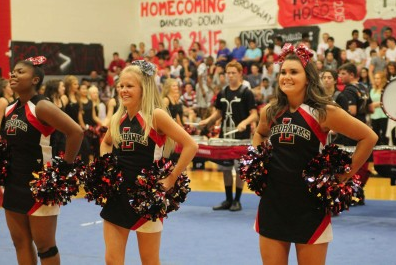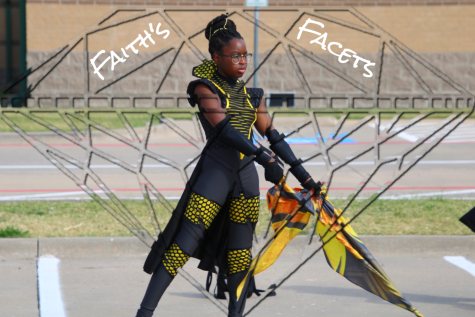Cheer isn’t a sport, but it soon will be

Under a UIL pilot program, competitive cheer will be an option for schools in the 2016-17 school year.
November 20, 2015
Next year the school’s cheerleaders will be, hopefully, going to competitions. This is exciting because cheer will finally be considered a sport at schools throughout Texas. The UIL approved a pilot year for the 2015-16 school year for cheer competitions and if all goes well, the program will stay.
Some cheerleaders will argue with me though, saying it is already a sport, regardless of the competition aspect. And I am here to tell those people that they are wrong, and yes I am a cheerleader too.
As it is now, cheerleaders are considered a “club.” Not a sport or athletics. This description is accurate because, yes they work hard, but all cheerleaders do is cheer at the actual sports being watched. Their job is to impress the crowd and get them involved. This job is very important, but does not equate to a sport.
The definition of a sport includes competition. It may seem odd that just one label can make the difference between a club and a sport, but it’s valid. The UIL competitions will be similar to what cheerleaders do at pep rallies and games, but competitive cheer still takes much more athletic ability and dedication, both mental and physical, than sideline cheer. Most importantly, they compete with other teams to find a winner. All these factors make it a sport.
Even though they may not perform a sport by cheering on the sidelines, cheerleaders are definitely athletes. With practice multiples times a week, workout, tumbling and stunting, it takes a lot of strength and ability to do what they do. It isn’t an easy job. For all those people who say, “Cheer isn’t a sport because anyone could do that stuff,” you’re wrong. It’s a lot more than just stomping and clapping as most people may assume.
Making cheer a sport will finally give cheerleaders the respect and acknowledgement they deserve from other athletes. It will also help cheerleaders to transition more easily into college cheer, if they so choose. Most college teams require skills and stunts that are more advanced than simple high school cheerleading and can only really be acquired in a competitive context.
So far, 32 other states have “competitive spirit squads” competing from local to national levels. All have been successful in the process. Texas will finally be added to that list, and considering how big cheer is in this state, it is long overdue.












